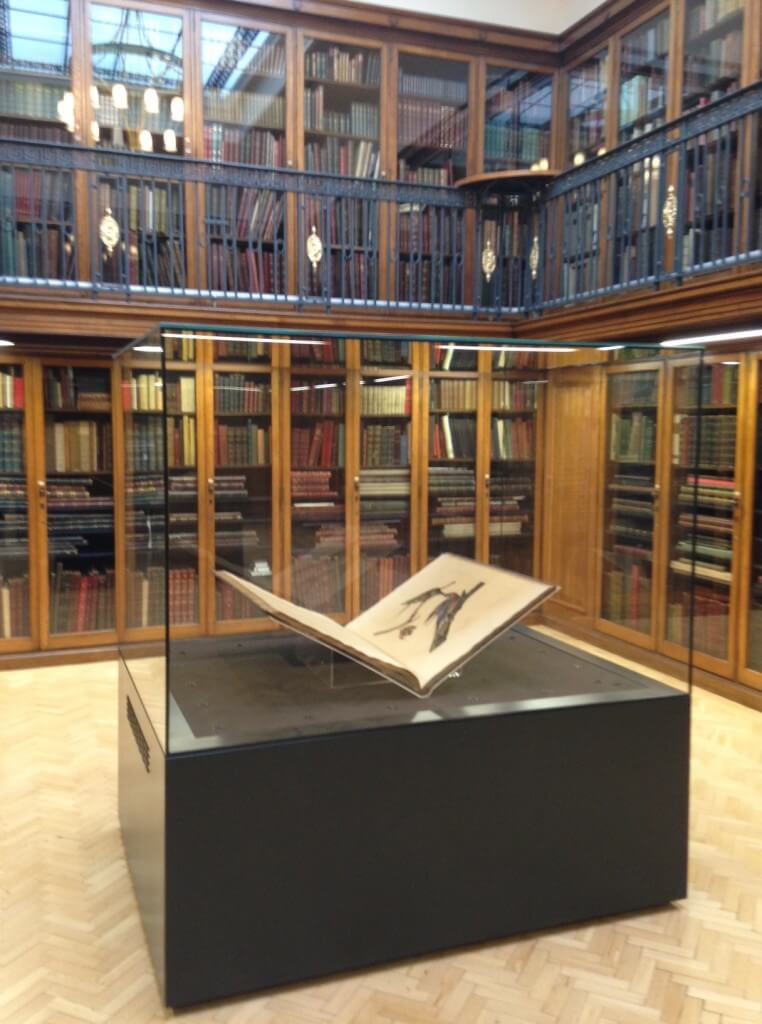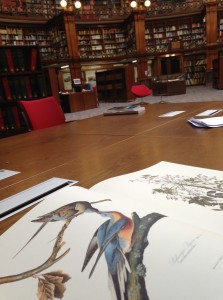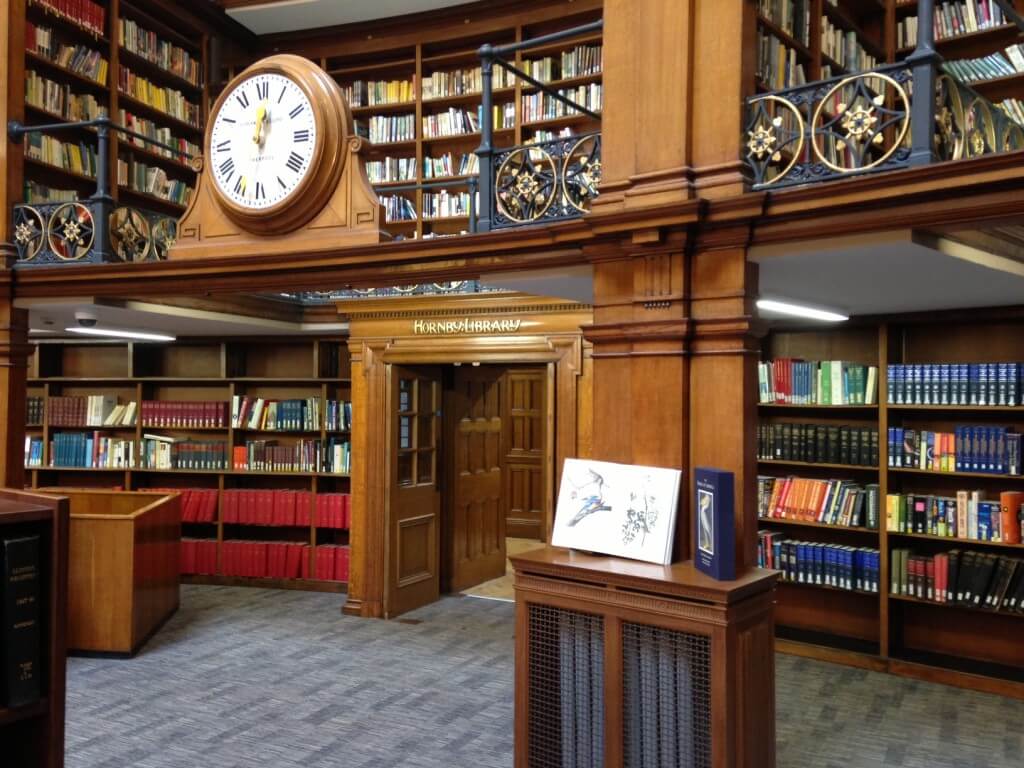 Sunday was, do you remember, the 99th anniversary of the death of Martha, the last passenger pigeon in the world, in Cincinnati Zoo, at around 1230 local time?
Sunday was, do you remember, the 99th anniversary of the death of Martha, the last passenger pigeon in the world, in Cincinnati Zoo, at around 1230 local time?
At 1230 local time in the Central Library in Liverpool, I was looking at one of only about 120 remaining complete volumes of John James Audubon’s Birds of America which was opened to the passenger pigeon page.
 This amazing book, the most expensive in the world when one of the copies sold for $11,500,000 a few years ago, is on permanent display in the Oak Room of the refurbished Liverpool Central Library. I contacted the library about a month ago to ask whether they would open the book to the passenger pigeon page on this auspicious date, and I am very grateful to them that they did.
This amazing book, the most expensive in the world when one of the copies sold for $11,500,000 a few years ago, is on permanent display in the Oak Room of the refurbished Liverpool Central Library. I contacted the library about a month ago to ask whether they would open the book to the passenger pigeon page on this auspicious date, and I am very grateful to them that they did.
The image here isn’t great, as it is taken through the glass case which protects this valuable volume, but it gives you an idea of the beauty of the art and the beauty of an extinct bird. The pose of a female on a higher branch than a male, with the male’s beak reaching inside the female’s, is not biologically realistic, but the birds certainly look alive and vibrant – and beautiful – all these years after they were depicted; 113 years after the bird ceased to exist in the wild and 99 years after the last of its kind, Martha, died.
 In the impressive nearby circular reading room I flicked through, with care, the pages of the modern edition of the Birds of America which is a large book, but a more manageable size than the 10-inch thick double-elephant folio pages of the original. The 40 inch by 27 inch original allowed Audubon to depict every one of the books 1050 individual birds as life sized – though some , such as the flamingo, needed to be doing contortions, even so, to fit the page.
In the impressive nearby circular reading room I flicked through, with care, the pages of the modern edition of the Birds of America which is a large book, but a more manageable size than the 10-inch thick double-elephant folio pages of the original. The 40 inch by 27 inch original allowed Audubon to depict every one of the books 1050 individual birds as life sized – though some , such as the flamingo, needed to be doing contortions, even so, to fit the page.
As I turned the pages I saw species that reminded me of my travels in the USA over the years; Plates 48 (cerulean warbler) and 54 (rice bunting – better known now as bobolink) reminded me of a day birding with friends; nighthawk (Plate 147) reminded me of visiting the John James Audubon Museum in Henderson, Kentucky; California condor (Plate 426) reminded me of a starry night and looking down a few feet at an enormous threatened species; and Mississippi kite (Plate 117) reminded me of loveliness on the tall grass prairie.
I looked at the clock on the wall of the reading room. It stood at 1235 – maybe that was when the passenger pigeon went extinct 99 years ago?
I am very grateful to the Central Library Liverpool for humouring me and opening Birds of America to this particular page for early September. I don’t know how long the book will be open to this page (maybe they will post a comment here) but whichever page is displayed, it will always be worth a look.
It’s a lovely library: a good mix of Victorian splendour and modern technology with dark wood and airy light. The staff on the day were very helpful and friendly and allowed me to take photographs. The Public Libraries Act was introduced to Parliament by the Liverpool MP, Sir William Ewart, in 1850, and I am very grateful to him. Our public libraries still serve us well. Save our Libraries!
How will the world mark the centenary of the extinction of the bird which was formerly the commonest on the planet on 1 September 1914?
My book, ‘A Message from Martha‘ will be published by Bloomsbury next summer – and I have until 30 September to finish writing it!
[registration_form]

I wish I had known. I was in Liverpool on Sunday. I will be back in a couple of weeks and will take a look
I am really enjoying your posts on the passenger pigeon. the first jobs we do make a difference and I was extraordinarily lucky that my first job was as Assistant Keeper (Zoology) at the Manchester Museum working on a new gallery on Birds of the World. It is now an old gallery – and maybe I am no longer a spring chicken. It starts, in a rather dated and downbeat fashion with Extinct Birds featuring alongside,as I recall, Huia, great Auk, Carolina parakeet and others,the passenger pigeon. Your posts have reminded me of researching the story of the passenger pigeon and how shocked I was by it. Looking back I think it was a turning point for me. Back then my job was just to tell the story; I thought if people just knew that would be enough to stop it happening again. That view now seems a bit dated too.
I am pleased you are writing this book.
Susan – thank you so much for that comment.
Hope you popped in to the museum to pay your respects to the Liverpool Pigeon
30th September! That seems a bit steep. I have great thoughts but the wheels are turning very much slower. We were supposed to get 4 books out this year but one even looks hard work as the work was done over 8 months ago. May be your dates are due to Chinese printing times! Or just the sheer number of books Bloomsbury turn out. As I always used to say to the RSPB ‘it rained today’ so I managed to do your paperwork’!! September looks very dry! Does not look good for you finishing then!
Did you know that John James Audubon visited Thomas Bewick in Northumberland, to pick up some of Bewick’s tips on illustrating birds before he embarked on his magnum opus? He was so grateful to Thomas Bewick’s hospitality and help that Audubon named Bewick’s Wren (Thryomanes bewickii, Audubon 1827) in his honour, although Bewick never clapped eyes on his eponymous Wren.
Tim – I think I once did know that but I had certainly forgotten it! Thank you. And it’s quite a nice wren, as wrens go, isn’t it?
It’s beginning to appear like you have a book to sell Mark…
Steve – not yet, next year. But I’m glad you’ve noticed. I may remind you again some time.
I love your crusading, you have taught me much and made me ask myself questions that I never thought I would ask. However your most evocative writing for me has been on your various trips, birding in Northants (Industrial Waxwings), many if your American posts (almost a book in itself) and your writing on Martha and her billions of ancestors. I love the symmetry of that book on that date! You make wildlife and conservation current, relevant, amusing and much more thus preventing the real enemy (apathy) from taking hold.
Mark – that is very kind of you. Thank you.
“Apathy not taking hold”
What an interesting thought, we’ve been talking about injustice since 404BC (Aristophanes)!!
We do act in the end but only when the issue is slapping us in the face and even then some fail to do so (eg those people that needed to be rescued from Hurricane Sandy last year!!).
Kind of puts it into another kind of perspective?